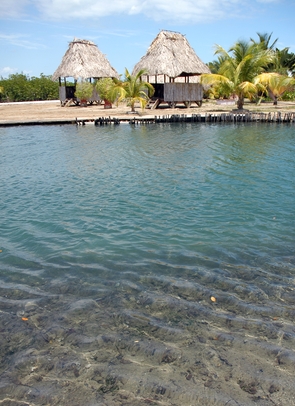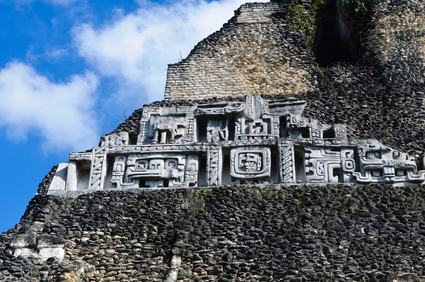More Than a Caribbean Hotspot
 For a trip to an ancient culture ripe with history, Belize is a great destination. Bordering countries such as Guatemala, Honduras, and Mexico, Belize offers a spectacular view of the Caribbean Sea. Forest reserves are protected and ancient Mayan ruins welcome visitors to learn more about a lost people. The Caribbean calls many people every year and the tourist attractions make the visit a memorable experience.
For a trip to an ancient culture ripe with history, Belize is a great destination. Bordering countries such as Guatemala, Honduras, and Mexico, Belize offers a spectacular view of the Caribbean Sea. Forest reserves are protected and ancient Mayan ruins welcome visitors to learn more about a lost people. The Caribbean calls many people every year and the tourist attractions make the visit a memorable experience.
The people of Belize are widely known for their generosity and welcoming attitude. The denizens put forth a concerted effort to preserve the natural beauty of the area and seem to have a deep-rooted connection to the lands. Unscathed by the ravages of modern industry, much of the lands in Belize have been preserved for centuries by the people. This includes large dense jungle areas and coral reefs. While protecting nature, these spiritual people display an extended family atmosphere, which makes anyone feel at home.
The cuisine of Belize is much like that of its bordering countries, rice and beans. Many of the local dishes are flavored with coconut milk, many different hot peppers, and plantains. Belize is also known for its underground roasted suckling pigs.
Most people in Belize speak English and Creole, but Spanish is also spoken throughout. You would think Belize would have more of a Spanish speaking population due to its neighbors; however, the spoken languages appear to have more in common with the nearby Caribbean Islands.
According to scholars the Mayan people chose the location and developed a thriving trade zone from Xunantunich; ancient Mayan site in the western part of Belize. For centuries the Caribbean Sea has welcomed travelers from across the globe as one of the most spectacular tropical areas on the planet. Keeping with traditions, the inhabitants of Belize welcome travelers of all kinds to their crystal waters and white sandy beaches. Millions of visitors every year travel to Belize City, which lies along the beach and is a popular port. With nature’s magnificence and the people’s welcoming nature one can easily fall in love with Belize and its surroundings.
A Bit of History
 The Mayan civilization began their influence in the Belize area approximately around 1500 BC, and was said to maintain itself until roughly though 800 AD. Since then, English sailors and colonies began developing the lands and today this is still an attractive trading port. Preservation of culture and nature is important to the citizens of Belize and it can be easily seen through the structures and pristine forests of the country.
The Mayan civilization began their influence in the Belize area approximately around 1500 BC, and was said to maintain itself until roughly though 800 AD. Since then, English sailors and colonies began developing the lands and today this is still an attractive trading port. Preservation of culture and nature is important to the citizens of Belize and it can be easily seen through the structures and pristine forests of the country.
Because the Mayan people were thought to have first inhabited this area, Belize is recognized as having its roots in this great civilization. People today view the ancient Mayan Empire as one of the most sophisticated cultures of its time; although, by the 14th century, this great civilization began its decline and no one truly understands why. The Spanish arrived in the 16th century, but the Mayan civilization had greatly dissipated into a minor presence by that time. To Belize’s fortune, the Spaniards used this island mostly for minor use of wood and concentrated on other countries for riches of gold and silver. This helped keep the natural jungle areas undamaged. Eventually this became a haven for pirates in the 17th century and then they also turned towards pilfering Belize for its rich wood resource.
In 1798, the British drove the Spanish out of Belize and gained control. It was declared a colony of British Honduras. This went against the terms of the Monroe Doctrine, which was in place at that time. This overthrow greatly influenced the culture of the Belizean people for approximately 140 years.
With the aftermath of World War II, the economy declined and the Belizean people sought their independence. In 1964, a self government was in place and it began a process of democracy and parliamentary type rule. In 1981, it officially became the country of Belize.
Guatemala has always maintained that Belize belongs to them; thereby, this has continued to create turmoil between these two countries. In the past, the British helped to put down any warlike situations from occurring between Belize and Guatemala. In recent times, the United States has also assisted with providing some additional stability to this region and has helped to make the Belizean people pro U.S.
In the last decade, Belize has experienced an influx of Spanish-speaking refugees from neighboring countries that were or are involved in civil turmoil. This has added more Spanish speaking people to this country and especially along the border towns of Belize. In addition, there are other peoples who call this great place home; Mennonites, British Ex-pats, people from Hong Kong, and a huge mix of cultures from Garifuna (the Arawak, the Carib, and descendants of the West African nations). As long as the citizens of Belize continue to preserve their lands, the beauty of this country will always remain unspoiled and a gift to the world.
Educational and Religion in Belize
Although some of the schools have access to the Internet and a computer lab, most of the compulsory schools do not. Technology in the school system is sparse, but that doesn’t discourage children from developing. In some of the less advantageous areas, teachers conduct school with whatever is available and provide writing utensils in any way they can. This may mean writing on the backs of old cereal boxes for context. As poor as some of these areas seem, their spirits appear joyful.
The primary religion in Belize is Roman Catholic; however, due to British influence, they also have a large protestant following. This is to be expected as many of the earlier settlements had been Englishmen traversing the Caribbean Sea as well as Belize being under British rule at one time in history. A small faction of Belize citizens still follow the Mayan culture, which brings in a diverse mix of religious beliefs. When you add the Garifuna culture into the overall mix, you get an even further mix of shamanism and Christianity practiced in some of the regions.




